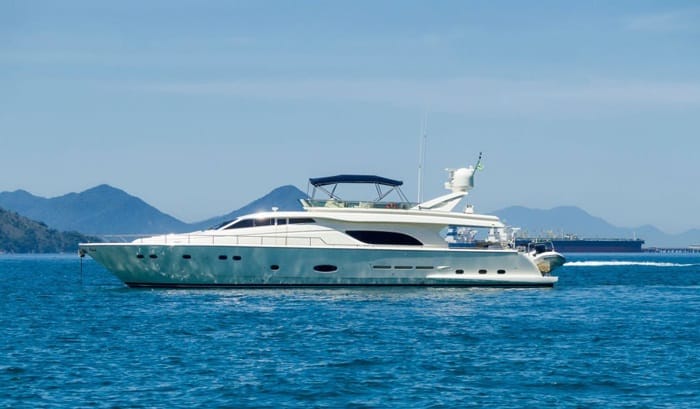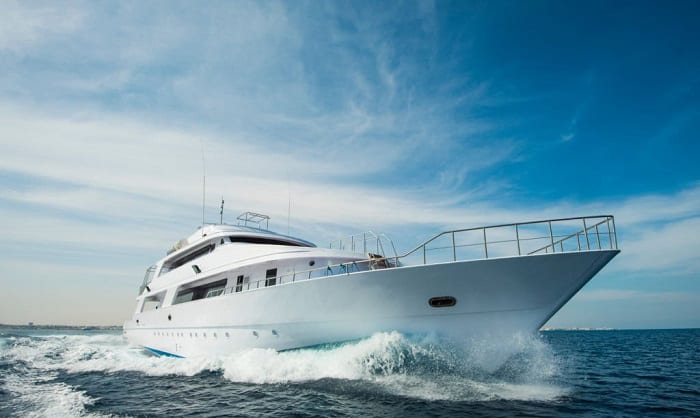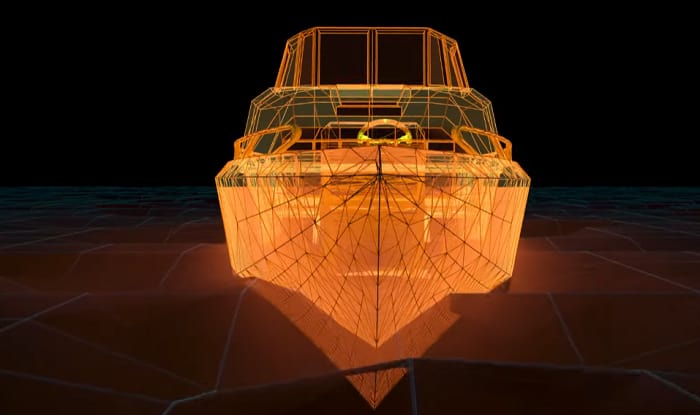You may wonder “what is a ballast on a boat” and how does it work for easy and safe boating? Boarding a stable vessel that strides over tides without the risk of capsizing is possible because of a boat’s ballast.
The “ballast” of a boat provides stability while lowering gravitational balance and reducing the roll. This can be a “ballast tank or bag” containing water or other counterweights to increase boat displacement.
Read on to learn more about various effective marine ballasts and how seasoned boating experts enjoy using them.
Table of Contents
Basic Guide About a Boat Ballast and How It Works
1. Simple Description Of An Effective Boat Ballast
The boat ballast meaning varies based on where it is used: a sailboat, angler, airboat, or air balloon. Usually, a ballast comprises water but also uses other counterweight methods for a specific boat or boating need.
Like a small boat ballast, it needs the traditional use of ballast stone, water, lead, steel, cement, or sand materials. The water ballast sailboat effectively increases displacement against strong water or wind pressures by having a ballast keel.
The concept of older boat ballasts like the year 1700 ship ballast types and those in sailboats are still relevant today. Before, larger boats even used stones or sand as a ballast keel for floatation stability.
Years passed and ballasts evolved into advanced marine counterweights to pull dive deeper into the water, and thus, lower the center of gravity and displace water to improve floatation.
This means that the more weight your ballast can provide, the better the boat can settle in the water. It keeps hulls covered well in water for more boat balance, a dry deck, and better water wake.
2. The Basics of Adding A Boat Ballast
Explore the basic tips for adding ballasts for a safe and well-balanced sailboat, yacht, fishing, wakeboard, and other vessel types here.
- Read about the best practices and secure the right boat ballast installation diagram to customize it.
- Know the space requirements for the ballast and the ballast size you want to use for your intended purpose.
- Check that your ballast features meet your expectations for big species fishing, recreational purposes like wakeboarding, etc.
- Consider the carriage capacity of the boat to select a boat ballast that serves as an effective counterweight.
- Compute for the freeboard, water displaced, or deadweight tonnage and draft calculations to know the effect of adding your ballast.
- Add sufficient counterweight to prevent the boat from tipping or heeling when exposed to excessively high waves and winds.
- Know whether a fixed, portable, or manual ballast system works for your boat by using a boat ballast calculator. Adding the appropriate type of ballast to your boat should be within the boat weight and buoyancy or floatation ability.
3. Marine Ballast Variants
Aside from a water ballast and the materials mentioned above, there are other variants to consider for your vessel. Adding the right ballast type is vital, especially for ocean goers, like open-sea fishing, tanker, or barge and cruise ship.
Though they differ in names, they are basically classified as a clean ballast (CBT), and segregated ballast type (SBT). Each ballast needs to be shaped and secured firmly so it will not upset the ship’s balance or damage it.
Also, larger boats like yachts use water or lead ballasts in their keel or lower hulls with pipes and pumps. This additional weight helps keep yacht cruisers and barges floating upright for long stationary hours in the water.
Marine ballasts differ from simple to advanced materials and construction but all need safe handling, precision fitting, and sediment flowability. Essentially, heavier ballasts can lower boats in the water for maximum stability and create a better wake.
4. The Power of Boat Ballasts
People tend to believe that each boat’s ballast type is much greater than the other, like using a water ballast. But the truth is, all of them are powerful counterweight measures when they are used accordingly.
- The boat ballast weight or additional mass needed depends on the boat’s displacement need, weight, and buoyancy.
- Check your desired ballast weight with the boat’s weight based on boat displacement or the weight of the water it displaces.
- Consider using stone, lead, iron, or cement to make a powerful sailboat ballast. Ensure the ballast is movable or designed to prevent further modifications to the layout of any boat.
- Add or reduce by one inch the weight of your boat in the water to see the difference when it’s floating. You can check different weight charts that apply even for small cruisers, yachts, or dinghies and tenders.
5. Water Ballast Technology Systems
Today, boats use water ballasting or deballasting systems, which are handier and safer. This liquid boat ballast system consumes less time and maximizes the already available seawater whenever needed in huge amounts.
In the old days and in some boating environments these days, solid ballasts are used for boat stability. This applies for sailboats to ease out movements, and cargo loading and discharging where the portage is minimal.
The good thing about a water ballast system is it can become lightweight when there is cargo on the ship. The ship’s cargo maintains the stability itself requiring little to no ballast water and can quickly flow when needed.
Ensure to adhere to port authority requirements wherever you need to drain sediments or take water to the ballast tank. You need to have a water management plan when your ship navigates in foreign or a state’s terrestrial waters.
Learn more from this YouTube Video from Bar Crusher Boats on how a water ballast “Quickflow system” works.
Frequently Asked Questions About a Dinghy or Tender Boat
1. What are ballasting and deballasting?
It’s the process of taking in and draining out seawater from the boat ballast tank for proper weight balance. The ballasting and deballasting process ensure structural integrity and stability of the ballast tank while at port or at sea.
Most ships with water ballast systems have piping and high-capacity pumps to ease the ballasting and deballasting process.
2. How does a ballast system work on a boat?
Installing a ballast system on a boat helps you keep stable access while navigating without the fear of tipping over. It also provides better storage for long periods or winterization purposes while preventing any damage.
Providing stability to your boat needs an additional solid, metal or water weight on the ballast tank or compartment. In addition, it is necessary to ease out the gravitational pull by displacing the weight down and putting dense water out for a better wake.
Conclusion
I’m certain you now know “What is a ballast on a boat and how does it work?” It’s your life-saving option to stride over strong tides without worries of capsizing.
Use these recommendations from experienced boaters to guide you in using your boat ballast tank. Operate your boat and enjoy proper displacement control of your ship to navigate smoothly and handle opposing buoyancy.
Continue learning these boating expert insights to ensure a safe and convenient boating experience. We hope you’ll share this review and feel free to share your thoughts about it with us.

“My intention from the first day establishing Boating Basics Online is to provide as much help as possible for boaters who want to experience a first safe and convenient trip. So feel free to join us and share your beautiful journeys to the sea!”



